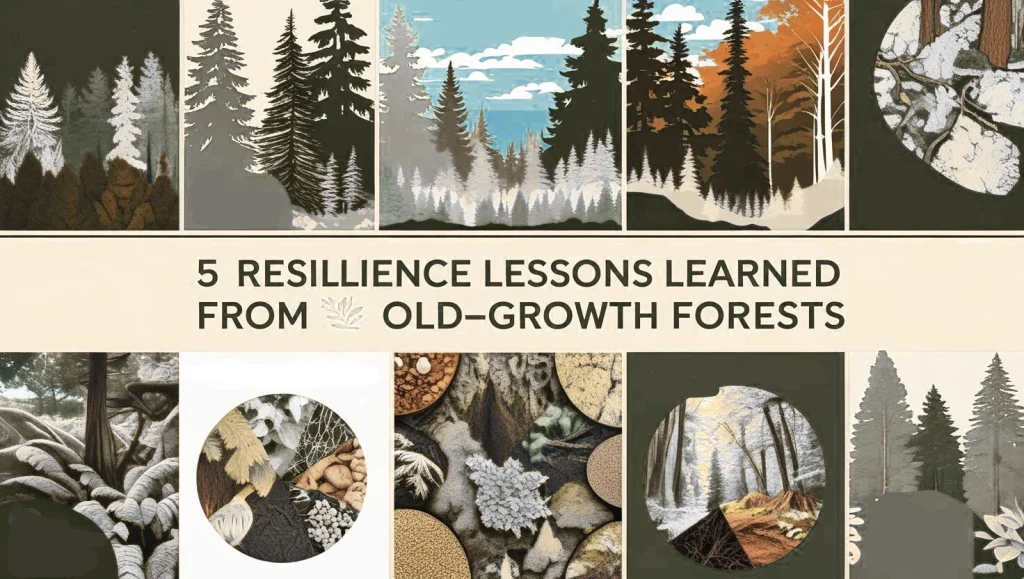
Cloudbursts are abrupt, powerful downpours that can transform peaceful landscapes into chaos within moments. These extreme weather events are becoming more frequent, leaving destruction in their wake. From triggering flash floods to devastating communities, cloudbursts are a growing concern in today’s changing climate. In this article, we’ll dive deep into what cloudbursts are, why they happen, how humans contribute to them, their impact on nature, and how we can survive and prepare for these natural disasters. Let’s explore this phenomenon:
What Is a Cloudburst?
A cloudburst is a swift and heavy downpour focused on a limited area, typically short in duration but highly destructive. Unlike regular rainfall, cloudbursts release an enormous amount of water—sometimes over 100 mm (4 inches) per hour—in a concentrated area. This intense rainfall can overwhelm drainage systems, trigger flash floods, and cause landslides, especially in hilly or mountainous regions.
Imagine a bucket of water being dumped all at once from the sky. That’s what a cloudburst feels like, except it’s nature’s doing, and the consequences can be catastrophic. These events are common in regions like the Himalayas, the Western Ghats in India, and other mountainous areas worldwide.
Also Read: Uttarkashi Cloudburst 2025: A Himalayan Tragedy Unfolds
How Do Cloudbursts Happen? The Science Behind the Storm
Cloudbursts occur when warm, moist air rises rapidly, cools, and condenses to form massive cumulonimbus clouds. These clouds hold vast amounts of water vapor, and under specific conditions, they release it all at once. Here’s a simple breakdown of the process:
- Warm Air Rises: Warm, moist air from oceans or other water bodies rises due to heat or when it encounters mountains (orographic lift).
- Condensation: As air rises, it cools, prompting water vapor to condense into minuscule droplets that cluster together, building dense, weighty clouds.
- Triggering Event: Strong winds, temperature changes, or atmospheric instability can cause the cloud to “burst,” releasing torrential rain in a short time.
- Geographical Influence: Cloudbursts are more likely in hilly areas where air is forced upward by terrain, intensifying rainfall.
Main Triggers:
- Monsoon Patterns: In regions like India, monsoon winds carry moisture-laden air, increasing the chances of cloudbursts.
- Climate Change: Rising global temperatures create more extreme weather patterns, making cloudbursts more frequent.
- Atmospheric Instability: Sudden changes in atmospheric pressure can destabilize clouds, leading to rapid rainfall.
| Cause Type | Examples | Impact |
| Natural | Monsoon winds, mountain lift | Sudden heavy rain |
| Human | Deforestation, emissions | Increased frequency and severity |
Also Read: How Climate Change Effects Farming: Surviving Floods, Tsunamis, and Thunderstorms for Future Food Security
Why Are Cloudbursts Becoming More Frequent? The Human Connection
While cloudbursts are natural phenomena, human activities are making them more frequent and severe. Here’s how we’re contributing to this growing problem:
1. Climate Change
The burning of fossil fuels, widespread deforestation, and rapid industrial growth release greenhouse gases that heat up the Earth’s atmosphere. As temperatures rise, the air can retain more moisture, setting the stage for heavier, more intense downpours—such as cloudbursts. Studies suggest that for every 1°C rise in temperature, the atmosphere can hold 7% more water vapor, fueling extreme weather.
2. Deforestation
Cutting down forests, especially in mountainous regions, destabilizes soil and increases runoff. Trees act as natural barriers, slowing down water flow and absorbing rainfall. Without them, even a small cloudburst can trigger landslides and floods.
3. Urbanization
Rapid urban development replaces natural landscapes with concrete, preventing water absorption. Poorly planned cities with inadequate drainage systems are particularly vulnerable to cloudburst-induced flooding.
4. Air Pollution
Pollutants like aerosols can alter cloud formation, making rainfall more intense. In some cases, pollution particles act as “seeds” for water droplets, leading to heavier rain in shorter bursts.Expert Insight: According to the Intergovernmental Panel on Climate Change (IPCC), extreme weather events, including cloudbursts, are expected to increase by 10–20% in frequency by 2050 if global warming continues unchecked.
The Devastating Impact of Cloudbursts on Nature and Humans
Cloudbursts don’t just bring rain—they unleash chaos. Their effects ripple through ecosystems, communities, and economies. Here’s how:
1. Flash Floods
A cloudburst’s intense downpour can rapidly swell rivers and streams, unleashing fast-moving flash floods. These floods can sweep away homes, vehicles, and infrastructure in minutes.
2. Landslides
In hilly areas, heavy rainfall loosens soil and rocks, triggering landslides. These incidents may flood villages, obstruct roadways, and bring communication networks to a halt.
3. Ecosystem Damage
Cloudbursts erode soil, destroy vegetation, and pollute water bodies with debris. Aquatic life suffers as rivers become muddy and oxygen levels drop.
4. Human Toll
- Loss of Life: Flash floods and landslides caused by cloudbursts have claimed thousands of lives globally. For example, the 2013 Uttarakhand cloudburst in India killed over 5,000 people.
- Economic Loss: Damaged infrastructure, homes, and crops lead to billions in losses annually.
- Displacement: Communities are often forced to relocate, leading to long-term social and economic challenges.
5. Nature’s Reaction
Nature reacts to cloudbursts with both destruction and adaptation. While floods and landslides reshape landscapes, some ecosystems recover over time. For instance, rivers may carve new paths, and vegetation may regrow, but repeated cloudbursts can hinder long-term recovery.
How Can Humans Survive a Cloudburst? Safety Tips and Preparedness
Surviving a cloudburst requires preparation, awareness, and quick action. Here are practical tips to stay safe:
Before a Cloudburst
- Stay Informed: Monitor weather forecasts, especially during monsoon seasons or in cloudburst-prone areas.
- Prepare an Emergency Kit: Include food, water, flashlight, first-aid supplies, and important documents.
- Know Your Area: If you live in a hilly or flood-prone region, identify safe evacuation routes and high ground.
- Strengthen Infrastructure: Build or reinforce homes with flood-resistant materials and ensure proper drainage systems.
During a Cloudburst
- Move to Higher Ground: Avoid low-lying areas where floodwaters collect.
- Avoid Water Bodies: Stay away from rivers, streams, or flooded roads, as even shallow water can be dangerous.
- Stay Indoors: If you’re safe, remain indoors and avoid electrical appliances during heavy rain.
- Follow Alerts: Listen to local authorities for evacuation orders or updates.
After a Cloudburst
- Avoid Floodwaters: They might carry contaminants or become electrically charged due to fallen power lines.
- Check for Damage: Before re-entering, carefully examine your home for any signs of structural damage.
- Help Others: Support community recovery efforts and check on vulnerable neighbors.
Can We Prevent Cloudbursts? Mitigation Strategies
While we can’t stop cloudbursts entirely, we can reduce their frequency and impact through collective action:
1. Combat Climate Change:
- Reduce carbon emissions by using renewable energy and promoting sustainable practices.
- Support global efforts like the Paris Agreement to limit warming.
2. Reforestation:
- Plant trees in vulnerable areas to stabilize soil and absorb rainfall.
- Restore degraded ecosystems to improve natural resilience.
3. Smart Urban Planning:
- Design cities with efficient drainage systems and green spaces to absorb excess water.
- Avoid construction in flood-prone or hilly areas.
4. Early Warning Systems:
- Invest in weather monitoring technology to predict cloudbursts and issue timely alerts.
- Use apps or community networks to share real-time updates.
5. Community Awareness:
- Educate people in high-risk areas about cloudburst dangers and preparedness measures.
- Practice drills to guarantee communities know how to respond promptly.
Real-Life Examples of Cloudbursts and Their Lessons
1. Uttarakhand, India (2013):
- Flash floods and landslides triggered by a massive cloudburst resulted in thousands of deaths and stranded numerous pilgrims.
- Lesson: Improved early warning systems and controlled tourism in fragile ecosystems are critical.
3. Leh, India (2010):
- A sudden cloudburst dumped 250 mm of rainfall over a short period, causing major flooding in Ladakh’s dry terrain.
- Lesson: Even arid regions aren’t immune; infrastructure must account for rare but extreme events.
4. Copenhagen, Denmark (2011):
- A cloudburst caused widespread urban flooding, exposing the limitations of city drainage systems.
- Lesson: Modern cities need climate-resilient infrastructure to handle extreme rainfall.
Nature’s Role and Recovery After a Cloudburst
Nature acts as both the wounded and the healer after a cloudburst strikes. While the immediate effects are destructive, ecosystems often adapt over time:
- Soil and Water: Floods redistribute nutrients, sometimes benefiting agriculture in the long term.
- Vegetation: Plants in flood-resistant ecosystems, like mangroves, recover quickly and protect against future events.
- Wildlife: Animals often migrate or adapt in response to altered water sources, yet ongoing cloudbursts can lead to irreversible habitat loss.
However, human-induced changes like deforestation and pollution slow nature’s recovery, making it harder for ecosystems to bounce back.
Conclusion: Facing the Storm with Knowledge and Action
Cloudbursts are a stark reminder of nature’s power and our role in intensifying its fury. By understanding their causes, preparing for their impact, and taking steps to mitigate climate change, we can reduce their devastating effects. From reforestation to smart urban planning, every action counts. Stay informed, stay prepared, and let’s work together to build a future where we coexist with nature’s extremes more safely.
FAQs
Where is cloud burst in India?
A major cloudburst struck Dharali village in Uttarkashi, Uttarakhand on August 5, 2025, triggering flash floods and landslides.
What happens if we touch the cloud?
It feels cool and damp—like mist or fog—because clouds are made of tiny water droplets.
What will happen when the cloud bursts?
A cloudburst causes sudden, intense rainfall, leading to flash floods, landslides, and damage in affected areas.
Can you sit on a cloud?
No, you can’t sit on a cloud—it’s made of tiny water droplets or ice crystals floating in air, not solid matter.
What are the symptoms of a cloudburst?
Symptoms of a cloudburst include sudden, extremely heavy rainfall over a small area, often with thunder, lightning, and rapid flooding or landslides.

